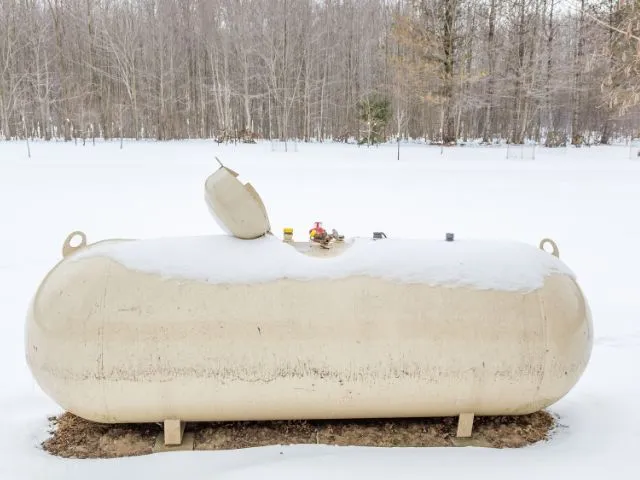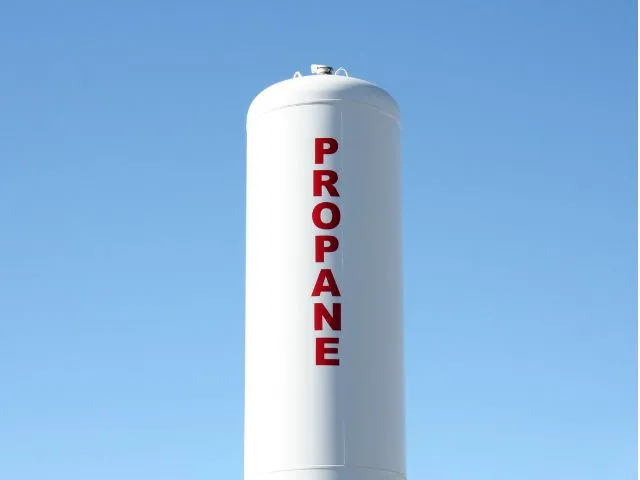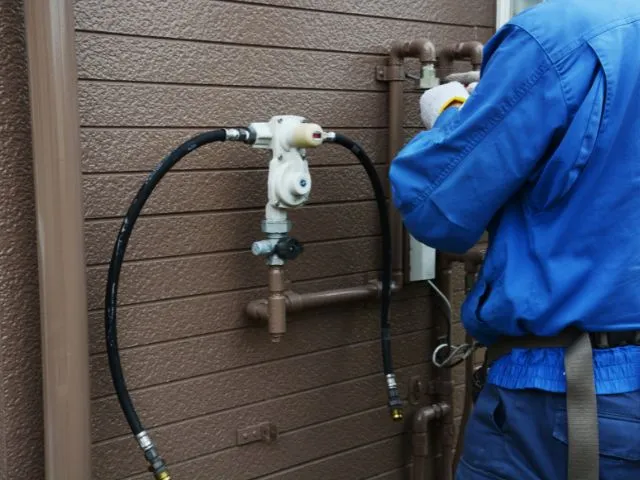Propane FAQ
Propane FAQ
Frequently Asked Questions
What Is Propane?
Why propane is called the “portable gas”
Propane is often referred to as the “portable gas” because it’s easier to store and transport than natural gas. In its liquid state, propane is 270 times more compact than in its gaseous form. This compactness allows a large amount of energy to be stored in a small space, making it a convenient fuel for various applications. When released from its tank, liquid propane instantly vaporizes into a gas, ready to fuel appliances and equipment.
Propane’s safety and odor
Like natural gas, propane is colorless and odorless, but an odorant is added to serve as a warning for escaping gas. It’s important to note that propane, like all fossil fuels, is a nonrenewable energy source.
How propane was discovered and developed
Propane’s history is relatively short, with its discovery dating back to 1912 when efforts were being made to find a way to store gasoline. Dr. Walter Snelling, conducting experiments for the U.S. Bureau of Mines, identified propane as the most plentiful gas that could be liquefied and stored under moderate pressure. By 1913, the commercial propane industry began, making propane a popular choice for heating American homes.
How Is Propane Produced and Transported?
Propane is extracted from natural gas and petroleum wells. Approximately 55% of the propane used in the United States is separated from raw natural gas at processing plants, while the remaining 45% is extracted from petroleum at refineries.
How propane reaches consumers
After production, propane travels through underground pipelines to distribution terminals across the country. These terminals function like warehouses, storing propane before it’s transported via railroad tank cars, trucks, barges, and ships to bulk plants, where local dealers fill smaller tanks for distribution. Smaller users, like those with propane grills, typically bring their cylinders to dealers for refilling.
How Is Propane Used?
Propane is a versatile energy source used in homes, farms, businesses, and industries, primarily for heating.
- Homes: Propane is often used in rural homes without natural gas service. Common propane appliances include ranges, ovens, space heaters, fireplaces, furnaces, water heaters, clothes dryers, and air conditioners. Propane is also popular for outdoor grills and recreational vehicles.
- Farms: Propane meets about half of America’s farm energy needs, powering equipment like crop dryers, chicken brooders, tractors, and greenhouse heaters.
- Businesses: Commercial establishments use propane for heating and cooking, from grocery stores to laundromats.
- Industry: Propane is ideal for metalworking, construction site heating, and highway construction due to its clean-burning and efficient properties.
An important energy source in the U.S.
The United States is the largest consumer of propane, which supplies about 1% of the country’s total energy needs. Approximately 90% of the propane used domestically is produced in the U.S., with the remainder imported from countries like Canada, Venezuela, and those in the Middle East.
Can Propane Be Used as a Transportation Fuel?
The benefits of using propane as a vehicle fuel
Propane is a clean-burning fuel that leaves no lead, varnish, or carbon deposits, which can cause engine wear. This results in reduced maintenance and longer engine life. Propane’s high octane rating (110) and low pollution output make it an environmentally friendly alternative to gasoline.
Why propane isn’t used more often in vehicles
Propane is less commonly used as a transportation fuel due to its limited availability, the cost of converting engines to run on propane, and a slight reduction in fuel efficiency compared to gasoline. Despite these challenges, propane remains a viable alternative for specific fleet operations.
What Influences Propane Prices?
How crude oil and natural gas prices affect propane prices
Although propane is produced from both crude oil refining and natural gas processing, its price is primarily influenced by the cost of crude oil. This is because propane competes mostly with fuels derived from crude oil.
How the supply and demand balance impact propane prices
The supply and demand balance for propane is influenced by factors like domestic production, weather, and inventory levels. While propane production is consistent throughout the year, residential demand peaks in the winter, creating a seasonal imbalance. This leads to inventory build-ups in the summer and drawdowns in the winter. Low propane inventories at the start of winter can increase the likelihood of higher prices during the heating season.
How colder-than-normal weather affect propane prices
Colder-than-normal weather can increase propane prices during the winter when demand is high. Since there are limited sources of additional supply, except for imports, cold weather early in the heating season can lead to higher prices. Early withdrawals from inventories reduce supply availability for the remainder of the winter, pushing prices upward.
Why proximity to supply impacts propane prices
Transportation costs play a significant role in propane pricing. Customers located farther from major supply sources, such as the Gulf Coast and the Midwest, generally face higher propane prices due to these additional costs.
How markets served by propane affect its price
Propane demand varies across different markets, each with distinct seasonal patterns. Residential demand, for example, is weather-dependent, causing prices to rise in the winter. The petrochemical sector, which tends to buy propane in the spring and summer when prices are lower, is more flexible. If petrochemical producers purchase propane during the winter, when residential demand is high, it can drive prices up. Similarly, if the agricultural sector’s demand for propane to dry crops remains high into the fall, it can also contribute to higher prices when residential demand increases.
Current information on propane prices, supply, and demand
For the latest updates on propane prices, supply, and demand, visit the Heating Oil and Propane Update section of the Energy Information Administration’s (EIA) website.
Why Do Propane Prices Spike?
Imports effect on propane prices during spikes
Imports provide limited relief during unexpected demand increases or supply shortages because of the long travel time required. However, when propane prices spike, the petrochemical sector may reduce its usage, thereby freeing up supplies for other consumers.
Current information on propane prices, supply, and demand
For the most up-to-date information on propane prices, supply, and demand, visit the Heating Oil and Propane Update section of the Energy Information Administration’s (EIA) website.
Source: U.S. Department of Energy’s Energy Information Administration website.
What is the G.A.R.C.F. charge on my invoice?
If you have further questions, please contact your local Schagrin Home Comfort Products office.
Why choose propane over electricity for home heating?
Propane furnaces provide higher air temperatures than electric heat pumps and maintain efficiency even in extreme cold. This ensures reliable warmth and lower energy costs compared to electric alternatives.
Is propane more cost-effective than electricity?
Yes, propane appliances generally have lower operating costs due to their higher efficiency. Propane water heaters, furnaces, and fireplaces use less energy while delivering superior performance, leading to long-term savings.
How does propane compare to electricity in terms of environmental impact?
Propane is a clean-burning fuel that produces fewer greenhouse gas emissions than electricity generated from coal or natural gas plants. It is a more environmentally friendly option for home heating and water heating.
How does a propane furnace compare to an electric heat pump?
Propane furnaces heat air up to 25 degrees warmer than electric heat pumps, ensuring faster, more effective home heating. Unlike heat pumps, which lose efficiency in freezing temperatures, propane furnaces provide consistent warmth in any weather.
Do propane furnaces work during a power outage?
Propane furnaces require electricity to power their blowers and controls. However, when paired with a propane standby generator, they can continue running even during an outage.
Why is a propane water heater better than an electric water heater?
Propane water heaters heat water twice as fast as electric models and provide a continuous supply of hot water, making them ideal for high-demand households. They are also up to 30% more cost-effective to operate.
What are the benefits of a propane tankless water heater?
A propane tankless water heater provides endless hot water on demand, eliminates standby heat loss, and reduces energy consumption compared to electric tank water heaters.
How does a propane fireplace compare to an electric fireplace?
Propane fireplaces produce real flames and provide stronger, more efficient heat than electric fireplaces. They also work during power outages, ensuring warmth and ambiance even when the grid is down.
Are propane fireplaces easy to install?
Yes, propane fireplaces come in a variety of venting options, allowing for installation in almost any room. They provide a hassle-free alternative to traditional wood-burning fireplaces.
Why should I choose a propane standby generator?
A propane standby generator ensures reliable backup power during outages, keeping essential home systems running. Unlike electricity, propane provides a long-lasting fuel source that does not degrade over time.
How long can a propane generator run?
The runtime of a propane generator depends on the size of your propane tank. With a properly sized supply, a whole-home generator can provide days or even weeks of backup power.
Can a propane generator power my entire home?
Yes, a properly sized propane standby generator can power essential systems such as heating, cooling, refrigeration, lighting, and medical devices, ensuring uninterrupted comfort during an outage.



